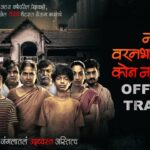Information is still emerging about the shooting at former President Donald Trump’s campaign rally in Pennsylvania on Saturday. However, even though the complete picture isn’t available, there are ways to think about the political and social moment we’re living in and how it may have contributed to the violence.
We do know the shooter, Thomas Matthew Crooks, was a 20-year-old from Bethel Park, Pennsylvania, about a 75-minute drive from Butler, where the rally was being held. He was a registered Republican (though he also made a $15 donation to a progressive group), perpetrated the shooting with an AR-15 style rifle purchased by his father, and had at least two explosive devices with him. And he was killed by a Secret Service agent after he killed 50-year-old Corey Comperatore and injured Trump as well as two others.
It’s entirely possible the shooting won’t be deemed “political” at all — we simply don’t know enough about the motive. But it’s fair to say that the attempted assassination has raised the political temperature in an already volatile country. Since Trump’s 2016 election, the US has seen the Charlottesville protests, the 2018 Tree of Life shooting, the 2022 Buffalo shooting, and the January 6, 2021, Capitol riot, among other events; now, the specter of political violence looms over our future, too.
To better understand the anxious and destabilized moment we’re living in, Vox spoke to four experts to help explain how political polarization, state violence, online radicalization, and feelings of disenfranchisement can drive political violence.
Based on our conversations, here are five ways we should think about political violence in this historic moment — why it breaks out and why violent periods often get worse before they get better.
Extreme polarization can make political violence more likely
Violence of this nature is unpredictable; that’s part of what makes it terrifying. Mass shootings, terror attacks, and political violence like Saturday’s shooting are profoundly destabilizing, especially in a profoundly violent time, with multiple wars and civil conflicts ongoing. But we do know that there are social, political, and interpersonal factors that contribute to public, politically motivated violence.
Lilliana Mason, associate professor of political science at Johns Hopkins University: Political violence is more likely to emerge when a society is politically divided along identity-based lines. When parties are on opposite sides of racial, ethnic, or religious divides (like our parties are in the US), it becomes easier for people to think of their political opponents as enemies.
In the US, we’re also geographically divided, so partisans have little exposure to regular people from the other party. This creates what we call “moral disengagement,” which consists of vilifying and dehumanizing attitudes toward our political opponents. These attitudes allow us to harm our fellow citizens without feeling like bad people ourselves.
Erik Nisbet, professor of policy analysis and communication at Northwestern University: We’re incredibly tribal and our political identities have become almost mega identities. They supersede all other social or cultural identities that we have. For some people, this is combined with these perceptions and rhetoric of dehumanizing the other side: “The other side is immoral — and an existential threat to our group, to our identity …”
And if the other side is immoral, not human and a threat, then violence becomes almost morally justified. “I still can be a good person and engage in violence.” And that’s how many of those around January 6, for example, viewed themselves: They were good people. They were righting a wrong. And violence was justified in that case.
Political violence is more American than we’d like to admit
Violence has always been a part of our politics. As Today, Explained host Sean Rameswaram put it recently, “Joe Biden has spoken about three times in about 24 hours about this assassination attempt on his opponent … The first time he said, ‘This isn’t us.’ The second time he said, ‘This isn’t us.’ The third time he said, ‘This isn’t us.’ But I think students of history might recall that this is kind of ‘us.’”
Nisbet: Unfortunately, it’s us, but there is something different in this historical moment. What’s different over the last 10 years is that political violence is no longer just political violence — it’s partisan violence. It’s violence that’s focused on and centered around our political identities as Democrat and Republican.
Previously, political violence was actually pretty symmetrical on the left and the right; it was focused around more general ideologies. Focused on maybe single issues. Now, political violence, the trends in recent years, are focused on more, “I am a Democrat, and thus I support violence against Republicans” or vice versa. And at least in terms of the number of violent acts tracked by the FBI and domestic terrorism databases, it has been more right-leaning in recent years than left.
Today’s extremism didn’t appear out of nowhere
Politically motivated public violence doesn’t happen in a vacuum; people don’t simply plan an assassination attempt or bombing for no reason. Political radicalization, personal grievance, and psychological illness all interact with social forces like political polarization — as well as the bare fact of widely available deadly weapons — to make political violence more likely.
Kurt Braddock, assistant professor of public communications at American University: We’re finding that extremists are motivated often by the way that they engage with content online, whether that content be a social network, or content that they’re absorbing. It never occurs in a black box and never occurs in isolation.
There’s always some kind of way that the attacker perceives that their action is part of a greater movement they learned about and are motivated by, in the context of their interactions, usually with people online.
There is some social upheaval when assassination attempts occur. It often has to do with the shooters’ perceptions of that social upheaval. Oftentimes, they feel as though they’ve been personally victimized, or that they perceive that there has been a threat by the target on them, or their own safety, which is why I think there’s a connection between state repression and actual violence against politicians.
Violence can come from a perception that people are losing their rights
The loss of privileges and rights — whether real or perceived — is another motivator of political violence. That’s a fairly easy pattern to recognize throughout the 20th and 21st centuries in American history.
Violence perpetrated by the state against citizens also plays a part in acts of violence against the state or its representatives. When the state visits its disproportionate capacity for violence on people — whether that is via repressive legislation or police brutality — violence against the state becomes a more logical response.
Braddock: There’s pretty significant literature that shows that one of the things that increases violence generally — not just terrorism, but also insurrection and riot and things like that — is state repression and the idea that people are losing their rights, that people have a perception that they’ve been victimized in a way. That’s been in the literature for quite some time.
There’s a theory of radicalization that argues that when one “side” starts to become more and more radical, the other side feels the need to engage in defense — they get radicalized themselves to engage in defense.
Nathan Kalmoe, executive director of the Center for Communication and Civil Renewal at the University of Wisconsin-Madison: Many political scientists define the state as an entity that holds a monopoly on the legitimate use of force within its territory. In other words, the state can do violence, and no other person or group can do so toward the state or each other without punishment. That puts the threat of state violence against its citizens at the center of our understanding of government, even for good governments.
State violence and political violence by citizens are often mutually supportive. For example, the violent white supremacist response to the Civil Rights Movement often combined Klan violence alongside police violence against activists and ordinary citizens. Sometimes they coordinated or even worked together, while other times they merely worked toward the same broad goals of maintaining white supremacy.
Research by Professor Christian Davenport at the University of Michigan and his colleagues shows that people tend to view the appropriateness of violence by the state and violence by citizens as proportional to each other in ways that parallel proportionate/disproportionate violence in wars. So, police acting with disproportionate violence against protesters makes people more willing to endorse proportionate violence against police in response.
The US body politic is already highly polarized, and an apparent attempt on a presidential candidate’s life is not going to change that. In fact, there is some reason to be concerned about the possibility that more violence of this nature is in store in the coming months.
Nisbet: One of the drivers of political violence is what we call meta perceptions. If a Democrat thinks Republicans are violent, they’re more likely to engage in violence themselves and vice versa. It’s “If they pull a knife, we pull a gun.” And so acts of political violence actually will beget violence because it makes each group more willing to engage in violence as sort of a self-protective function. And that becomes like a self-reinforcing spiral.
Kalmoe: I’m very worried about the potential for subsequent political violence. What we learn about motives may have a big impact on that. The vast majority of Americans are opposed to political violence, but that shifts substantially if the other side is seen as acting violently first. The most inflammatory situation would be an ideologically motivated killer from the political left, though it helps that Democratic leaders have uniformly denounced the violence.
Braddock: I’m glad to see that people on both sides, whether politically motivated or not, are coming out against political violence. And I’m hoping that that’s a trend that continues. I wouldn’t say I’m confident, but I am hoping for it. I worry, though, that we are going to see more violence coming from this.
Peter Balonon-Rosen and Sean Rameswaram contributed reporting to this article.











![ROSE IN DA HOUSE I BE MY BOYFRIENDS 2 [OFFICIAL TRAILER]](https://cherumbu.com/wp-content/uploads/2022/01/ROSE-IN-DA-HOUSE-I-BE-MY-BOYFRIENDS-2-OFFICIAL-150x150.jpg)

